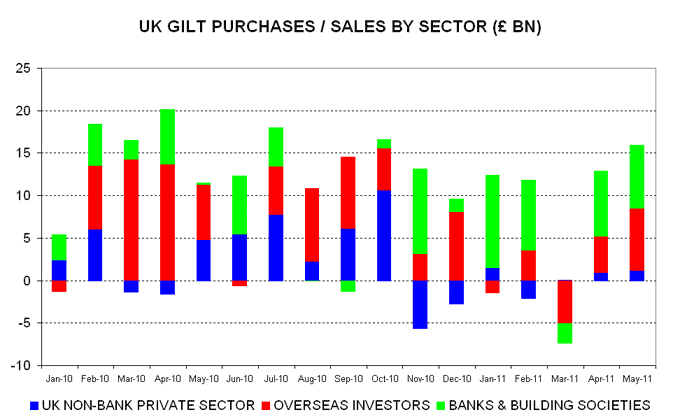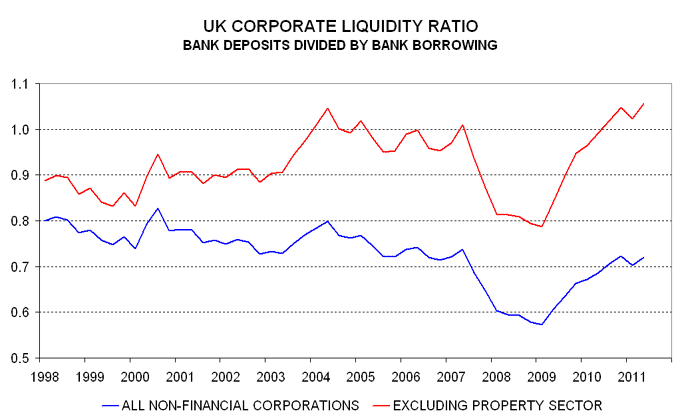UK monetary trends satisfactory, EMU crisis boosts gilts
Gilt yields were suppressed this spring by further semi-compulsory purchases by banks along with a pick-up in foreign buying, probably related to capital flight from the Eurozone as sovereign debt worries mounted.
The Debt Management Office issued £16.1 billion of gilts in May, while UK banks and overseas investors each bought £7.4 billion, with the rump taken up by domestic non-banks. Bank purchases totalled £33.5 billion, or 69% of net issuance, in the six months to May. Overseas buying in May was the strongest since December, in the wake of the Irish bailout – see first chart.
With banks' liquid asset holdings at their highest for nearly 30 years, according to the recent Financial Stability Report, gilts are vulnerable to a slowdown in their buying, as well as reduced foreign purchases if a Greek financial support deal calms Eurozone debt markets.
Other features of today's monetary statistics for May include:
-
Broad money (i.e. M4 excluding holdings of intermediate other financial corporations, or M4ex) rose by 0.3% in May, reversing a 0.1% fall in April. Annualised growth was only 1.0% in the latest three months but – as previously discussed – has been depressed by money-holders switching from sterling into foreign currency deposits, possibly in (correct) anticipation of exchange rate weakness. UK residents' currency deposits at UK banks, excluding holdings of intermediate OFCs, increased by the equivalent of 1.0% of M4ex in the three months to May (unadjusted, not annualised).
-
Narrow money trends have improved, with M1 rising by 9.7% annualised in the three months to May, following a contraction in late 2010 / early 2011. M1 is a better leading indicator than broad money and more weight should have been given here to its earlier weakness, which signalled recent economic sluggishness. The pick-up since early 2011 suggests improving economic prospects for the second half of the year.
-
The corporate liquidity ratio – sterling and foreign currency bank deposits of non-financial corporations divided by bank borrowing – recovered in April and May after a first-quarter dip. Excluding property companies, the ratio is at its highest level on record in data extending back to 1998 – second chart.



Reader Comments